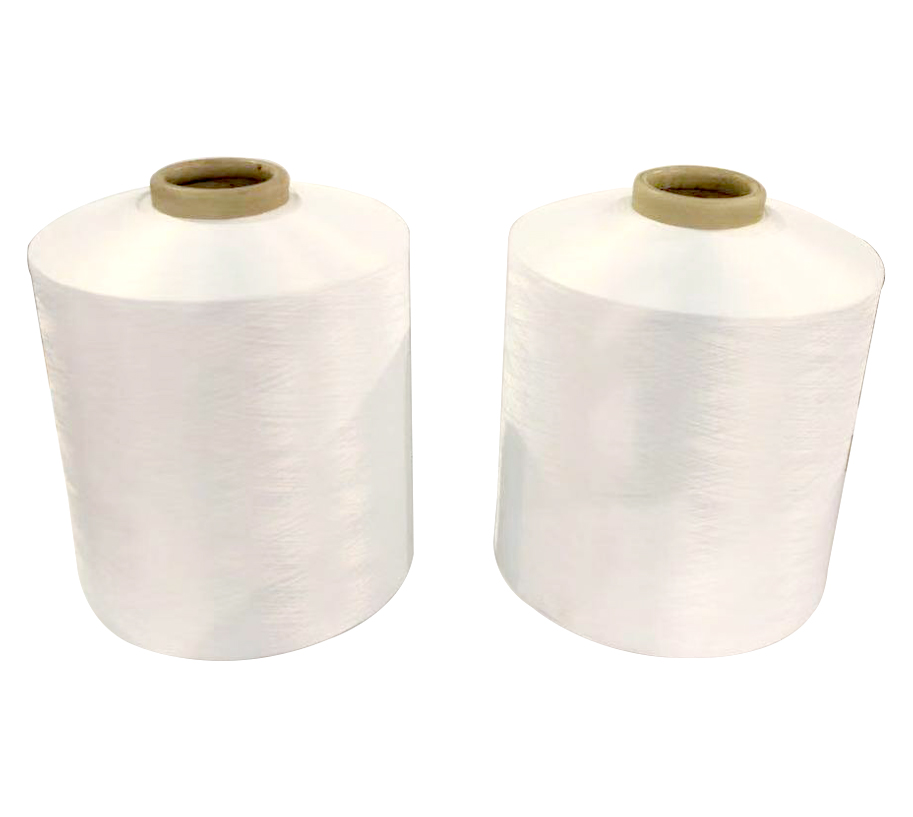Navy/Grey 150D/36F DTY Yarn 99.99% Polyester Anti-pilling Yarn for Sewing Materi...
See DetailsTextile fiber generally refers to a few micrometers or tens of micrometers in diameter, and the length is many times larger than the diameter. It can be used to process and manufacture textile objects and is characterized by being thin and long. Textile fibers must have a certain degree of fineness and length in order to make the fibers hug each other, and rely on the friction between the fibers to spin into yarn. This is also one of the necessary conditions for textile processing and the use of products.
Length is one of the main quality indicators of fiber materials and an important factor in determining the spinning value of fiber materials.
1. The relationship between fiber length and yarn quality
The relationship between fiber length and yarn quality is very close. Mainly in the following aspects.
a) The fiber length and yarn strength are in the yarn. If the fiber length is longer, the contact length between the fiber and the fiber is longer. When the yarn is subjected to external force, the fiber is not easy to slip off. The number of fibers that are pulled and slipped is less, so the yarn strength is higher. The change of fiber length has different effects on the rise and fall of yarn strength. When the length of the fibers constituting the yarn is relatively short, the influence of the length on the yarn strength is relatively large. Among the commonly used textile fibers, the length of cotton fiber is relatively short, so its length has a greater impact on yarn strength. The uniformity of fiber length also affects the yarn strength. When the short-staple ratio of raw cotton is higher than 15%, the yarn strength will decrease significantly.
b) Fiber length and yarn density. There is a limit to the spinning density of fibers of various lengths. On the premise that the yarn has a certain strength, the longer the fiber length, the smaller the limit linear density of the spun yarn, that is, the thinner the spun yarn; the shorter the fiber length, the greater the limit linear density of the spun yarn , That is, the thicker the spun yarn. For example, fine cotton with a length of 25mm or less can only be spun medium and coarse special yarns of 30 tex or more; for fine cotton with a length of about 29 mm, the limit linear density of the spun yarn is 10 tex. For spun yarn, long-staple cotton must be used. The longest fiber of long-staple cotton can be spun to 3tex spun yarn.
c) Fiber length and evenness of yarn evenness The longer the fiber length and the higher the uniformity of the length, the better the yarn evenness.

When the fiber length is short and the length uniformity is poor, the evenness will be poor and the quality of the finished yarn will decrease.
d) Fiber length and yarn hairiness. When the fiber is longer, the fiber ends on the yarn are less exposed, the yarn hairiness is less, and the surface is smooth. On the contrary, the yarn surface has more hairiness. Fiber fineness reflects the degree of fiber thickness. Like length, fiber fineness is also non-uniform.
2. Fiber fineness and yarn strength. When other conditions remain unchanged, the thinner the fiber, the higher the yarn strength, and the finer the spinning fineness. This is because the fibers are thin, the number of fibers contained in the cross-section of the yarn is large, the contact area between the fibers is large, the chance of slippage between the fibers is small, and the yarn strength is high. Cotton fibers are thinner due to poor maturity due to their thin walls (single fiber strength is ly low), and the yarn strength decreases instead.
3. Fiber fineness and yarn evenness uniformity. Generally, the thinner and more uniform the fiber, the larger the number of fibers in the cross section of the yarn, the better the evenness of the yarn. Especially in the spun yarn, when the number of fibers is inherently small, if the finer fiber is used, the effect of increasing the yarn strength and improving the yarn evenness is particularly significant. The relationship between fiber length and spinning process is also very close. From the structure and size of the spinning equipment to the process parameters of each process, it must be matched with the fiber length used. For example, when the length of raw cotton is different, the beater form of the cleaning Machine and the length of the cotton feeding board of the carding Machine should be changed. The roller gauge in the cotton spinning Machine table can be adjusted. When the fiber length is long, the roller gauge increases, and when the fiber length is short, the roller gauge decreases. The twist coefficient of the spun yarn should also change with the change of fiber length. In order to make the spun yarn have a certain strength, when spinning with short fibers, the twist coefficient of the spun yarn should be selected to be larger; when spinning with long fibers, the twist coefficient of the spun yarn is generally selected to be smaller. The low twist factor can increase the output of the spinning frame.
Because of this, the fiber length is different, and its corresponding spinning process should adopt different process parameters.